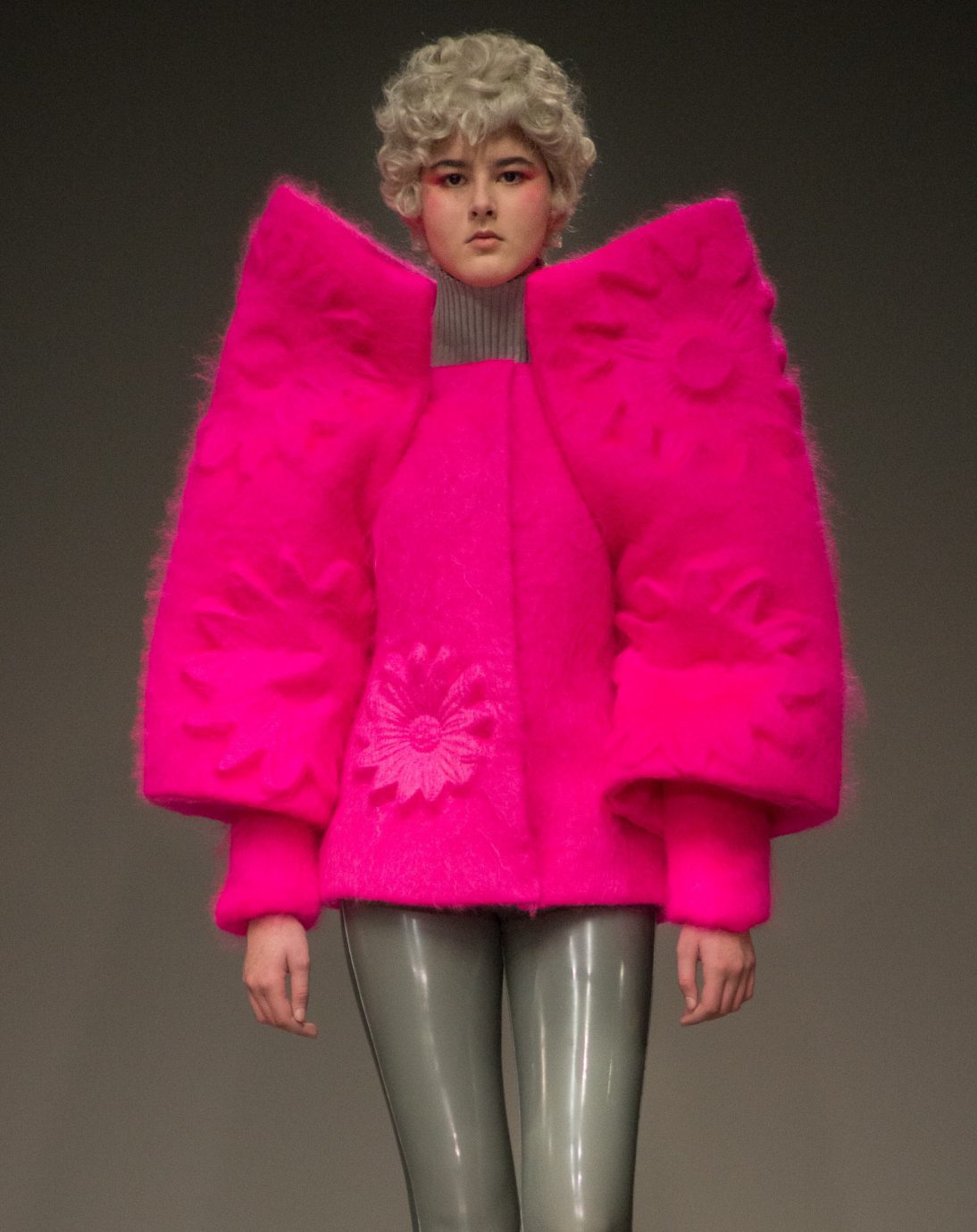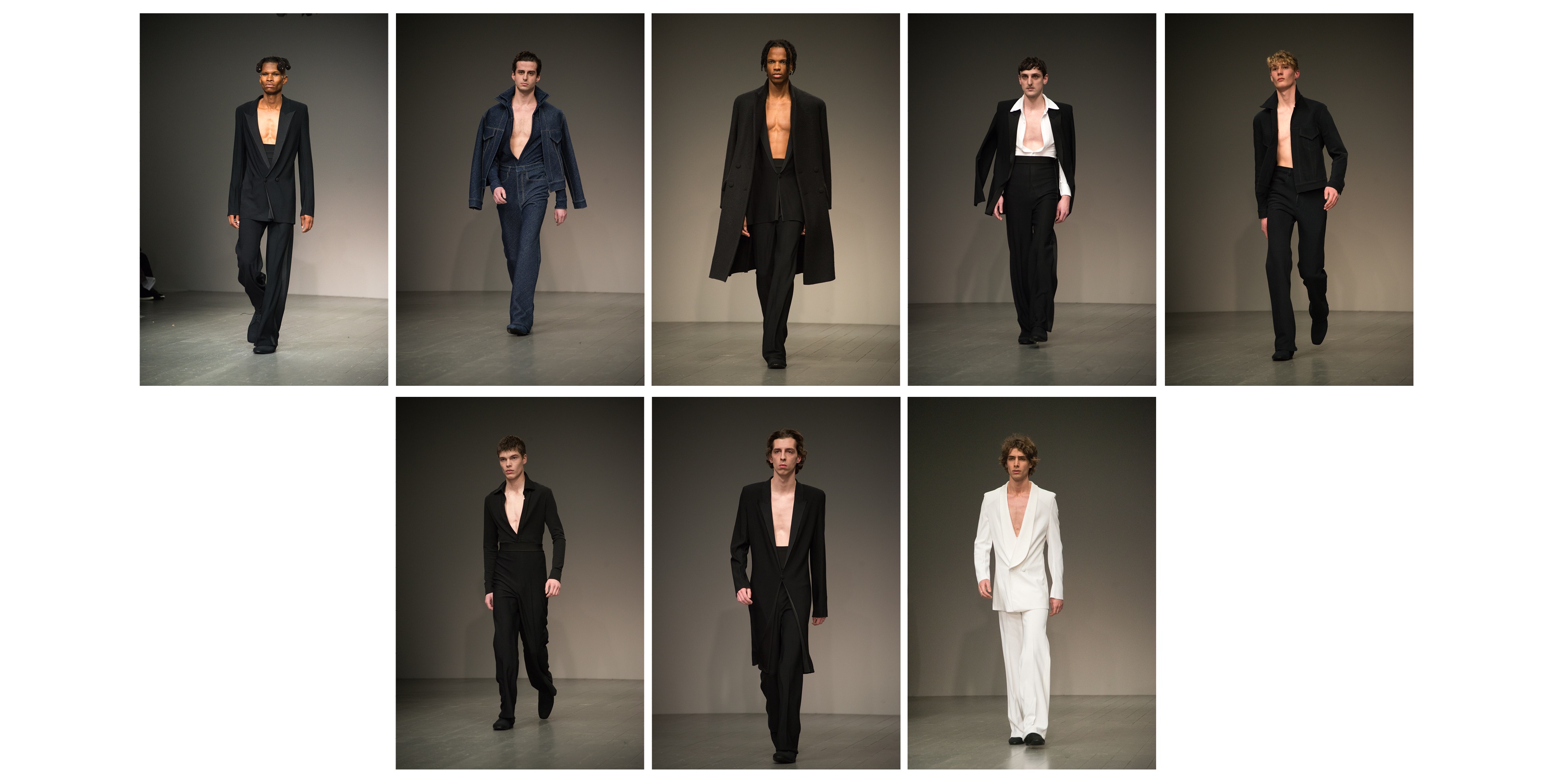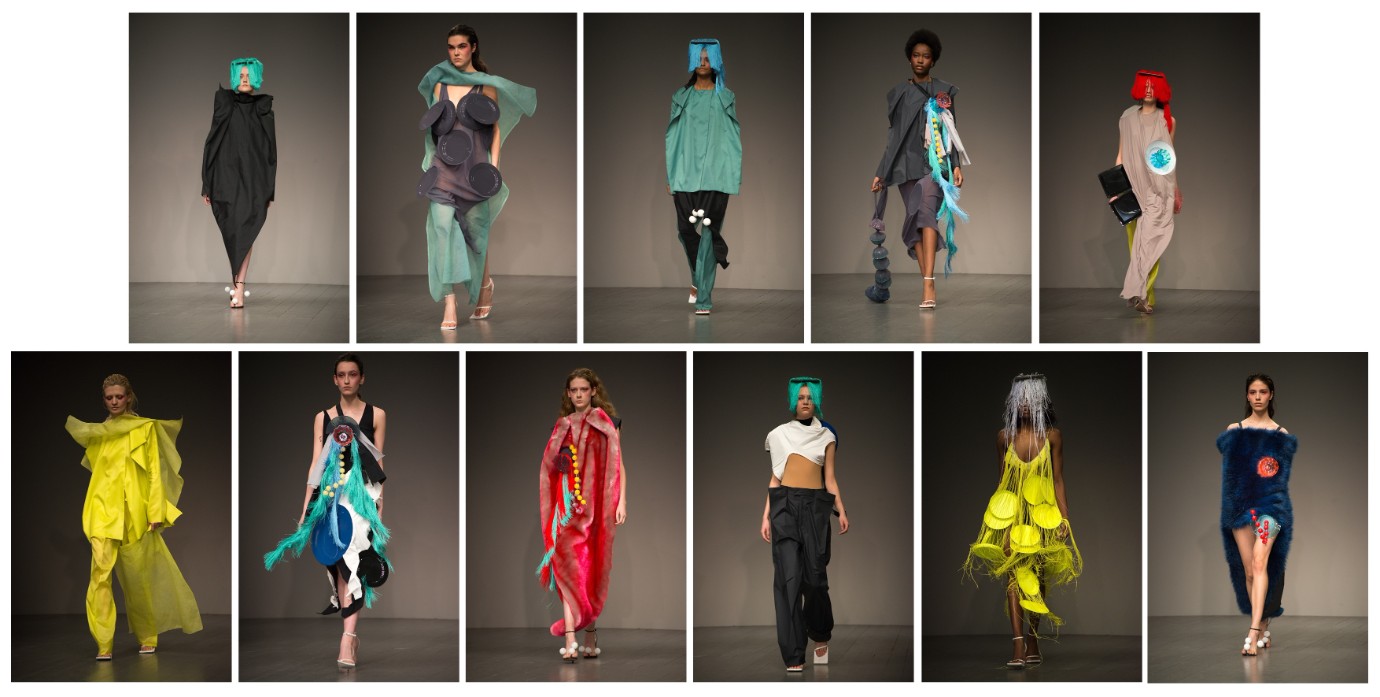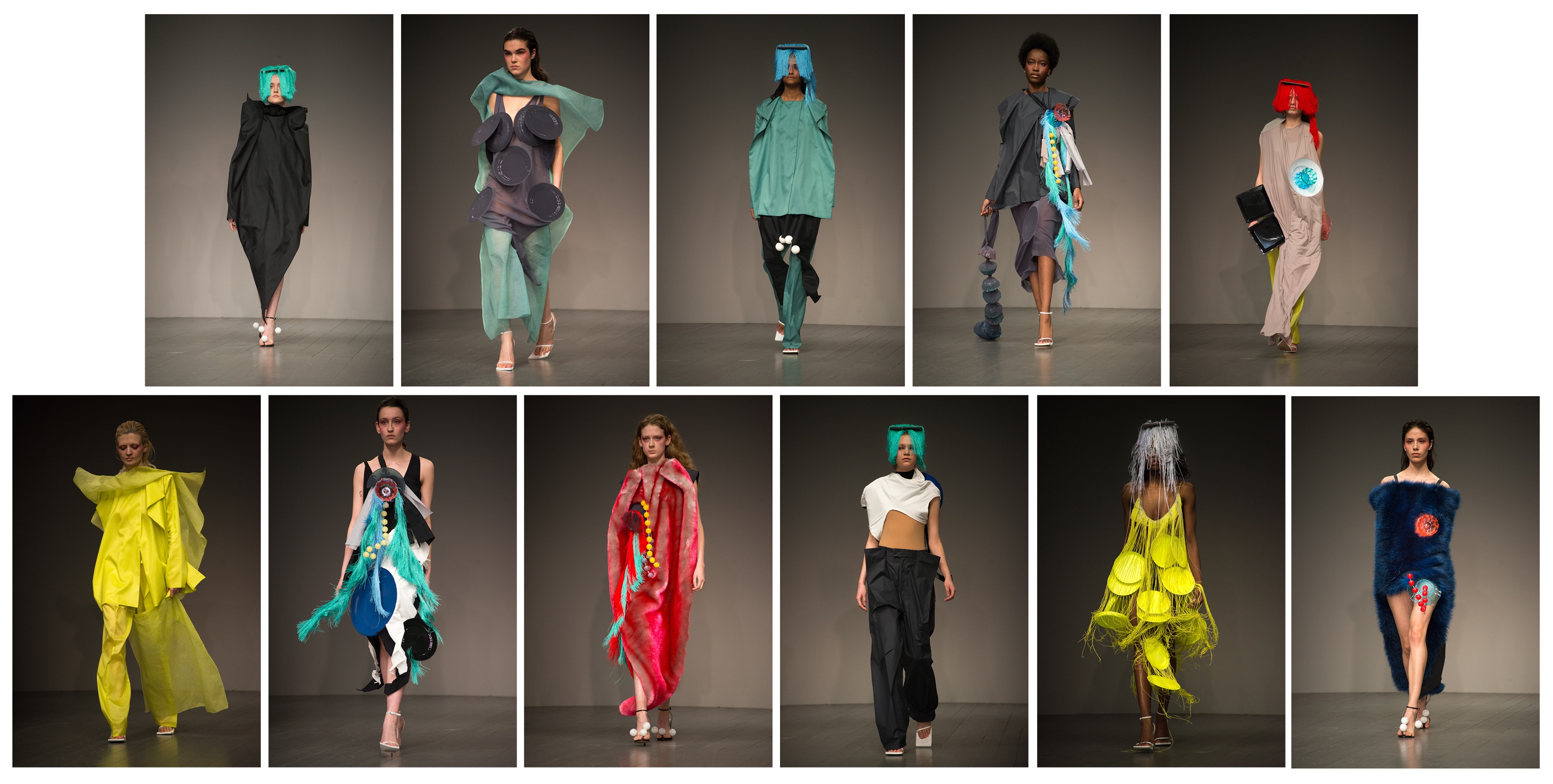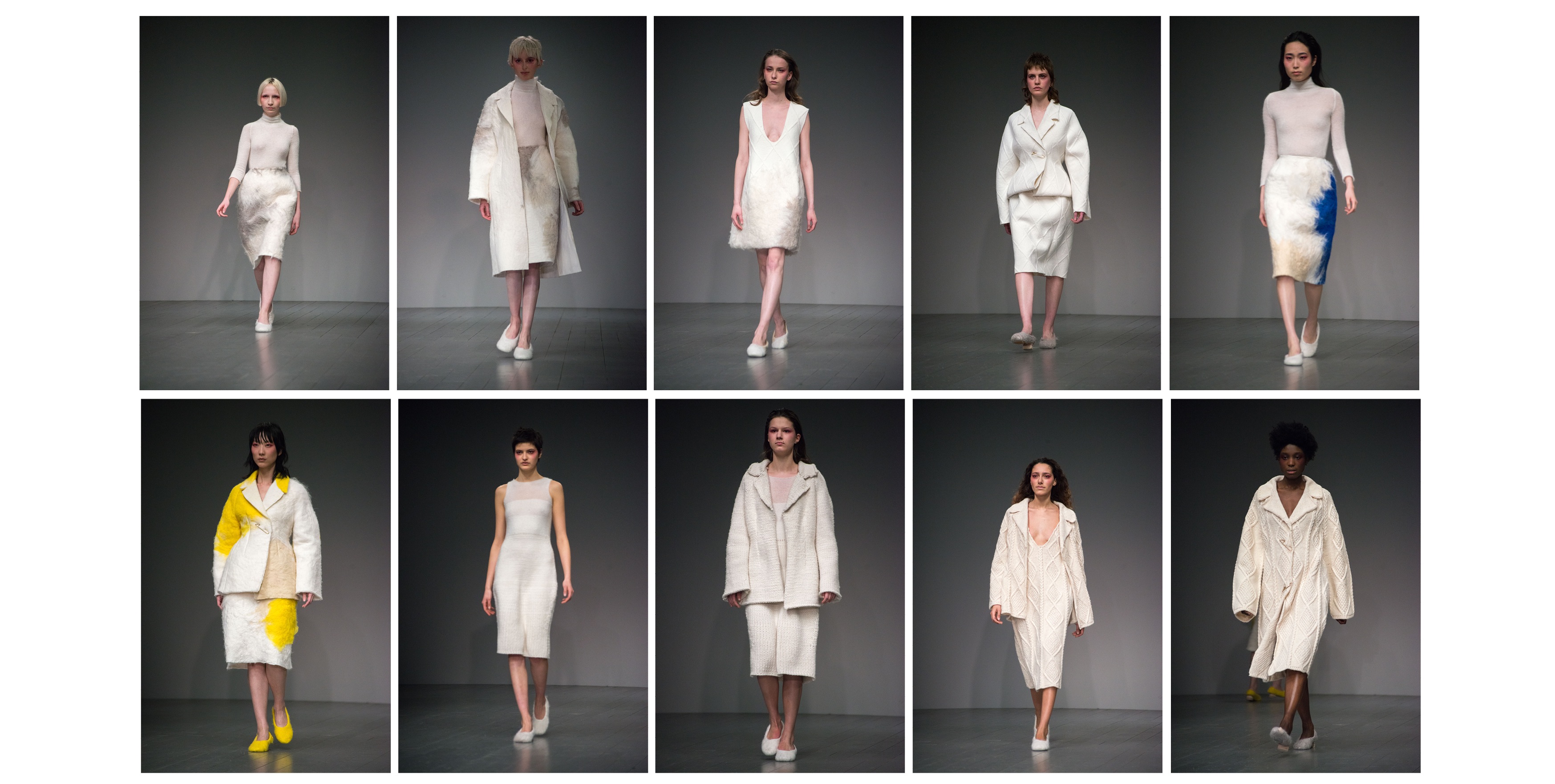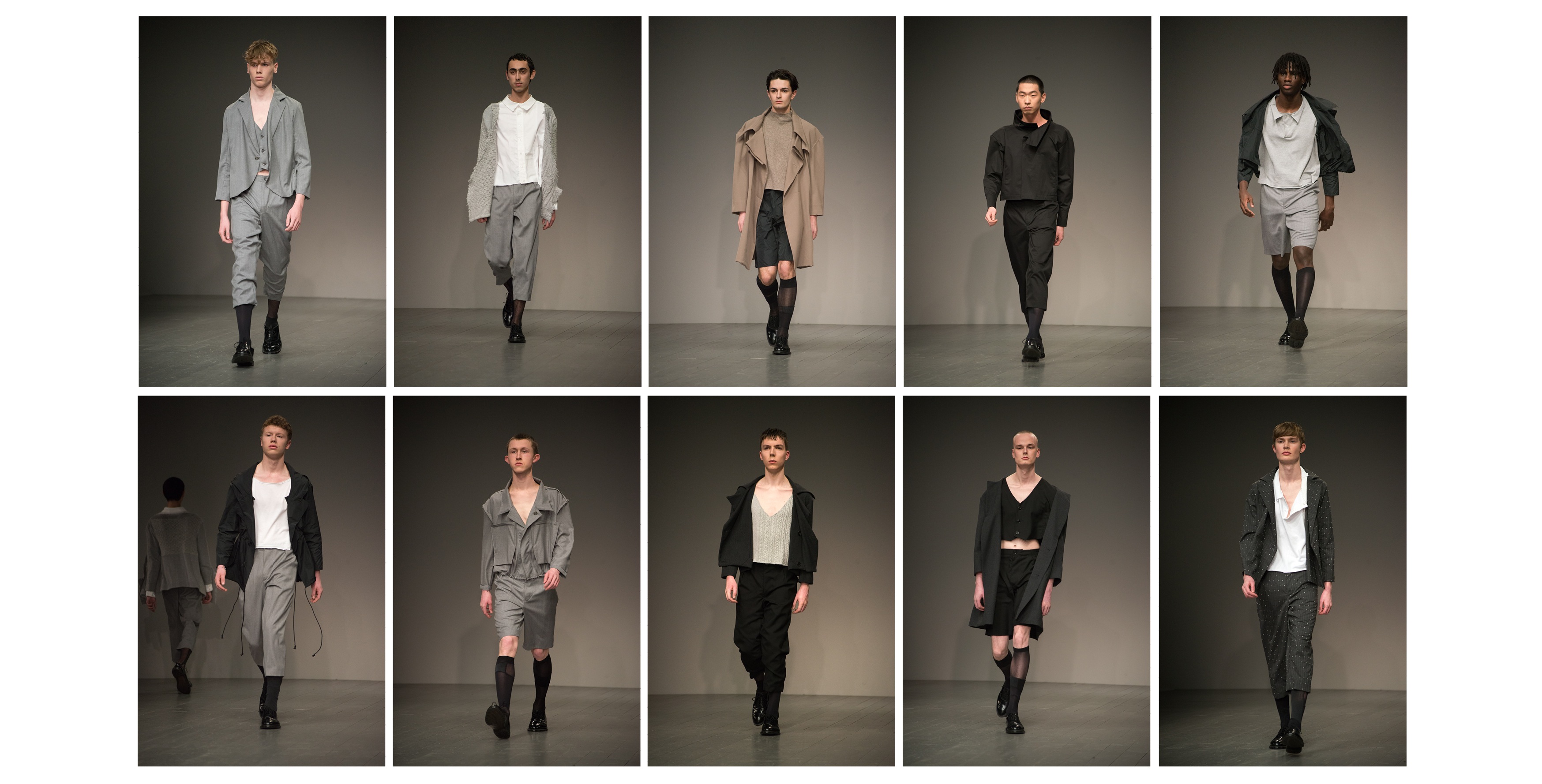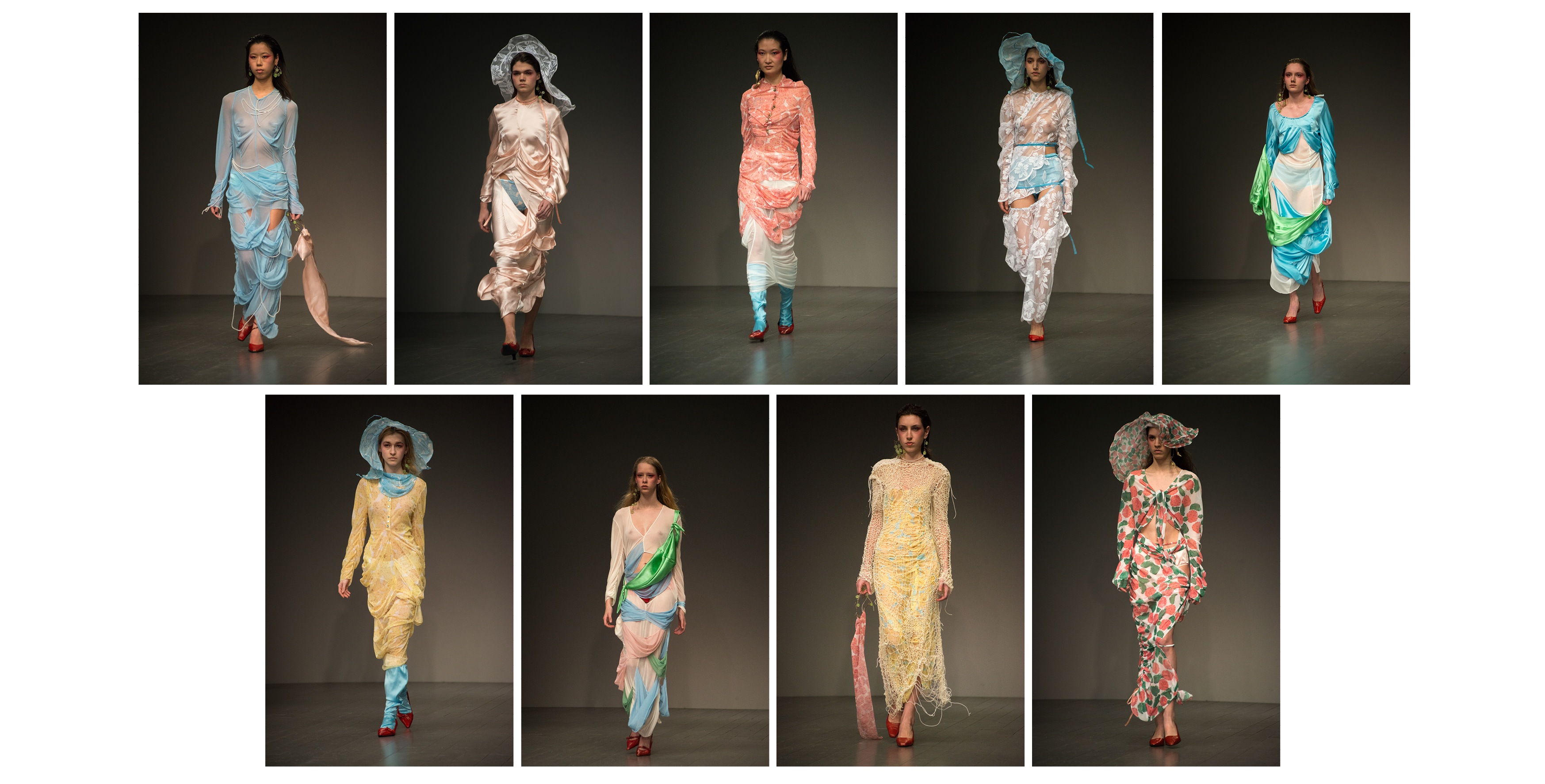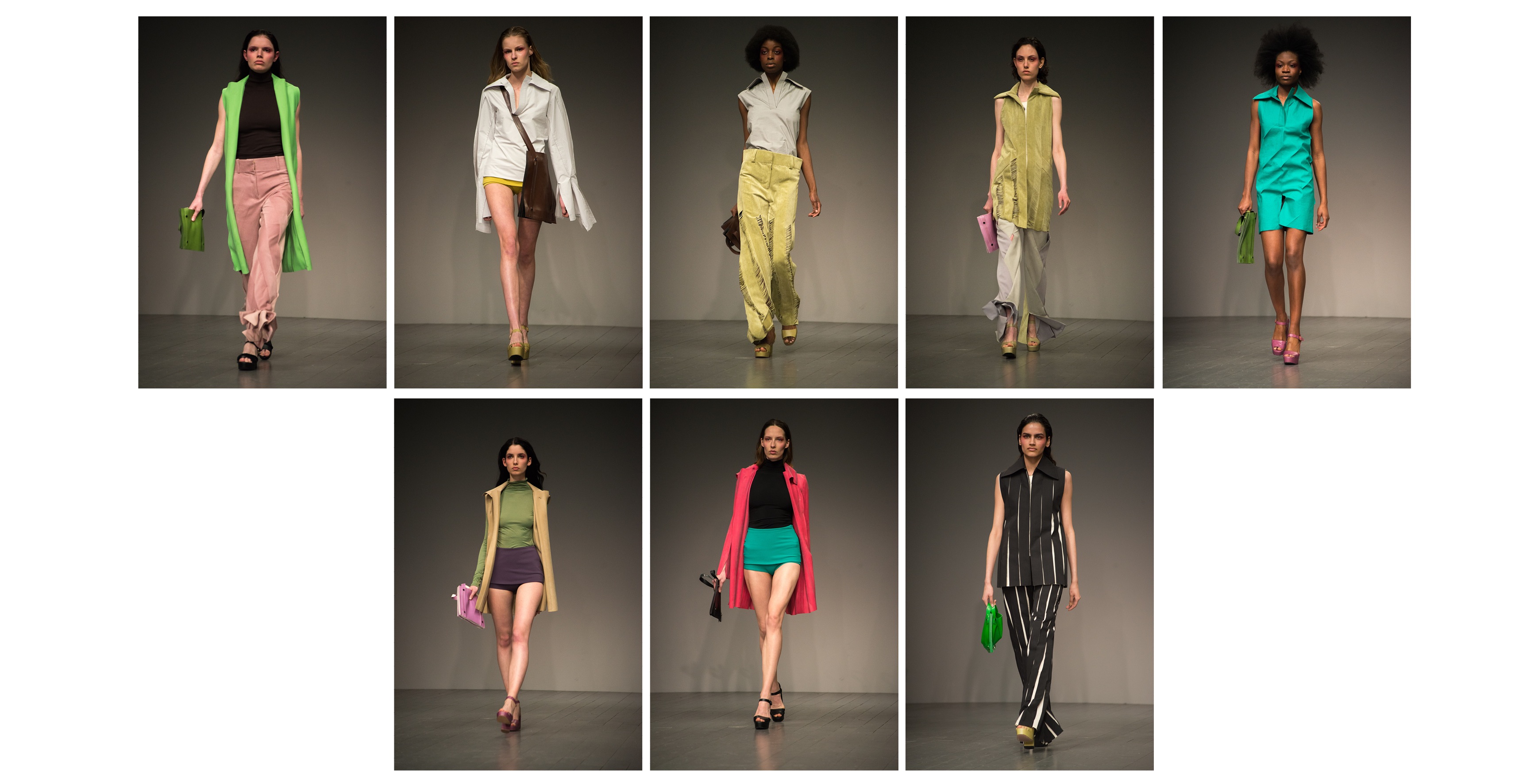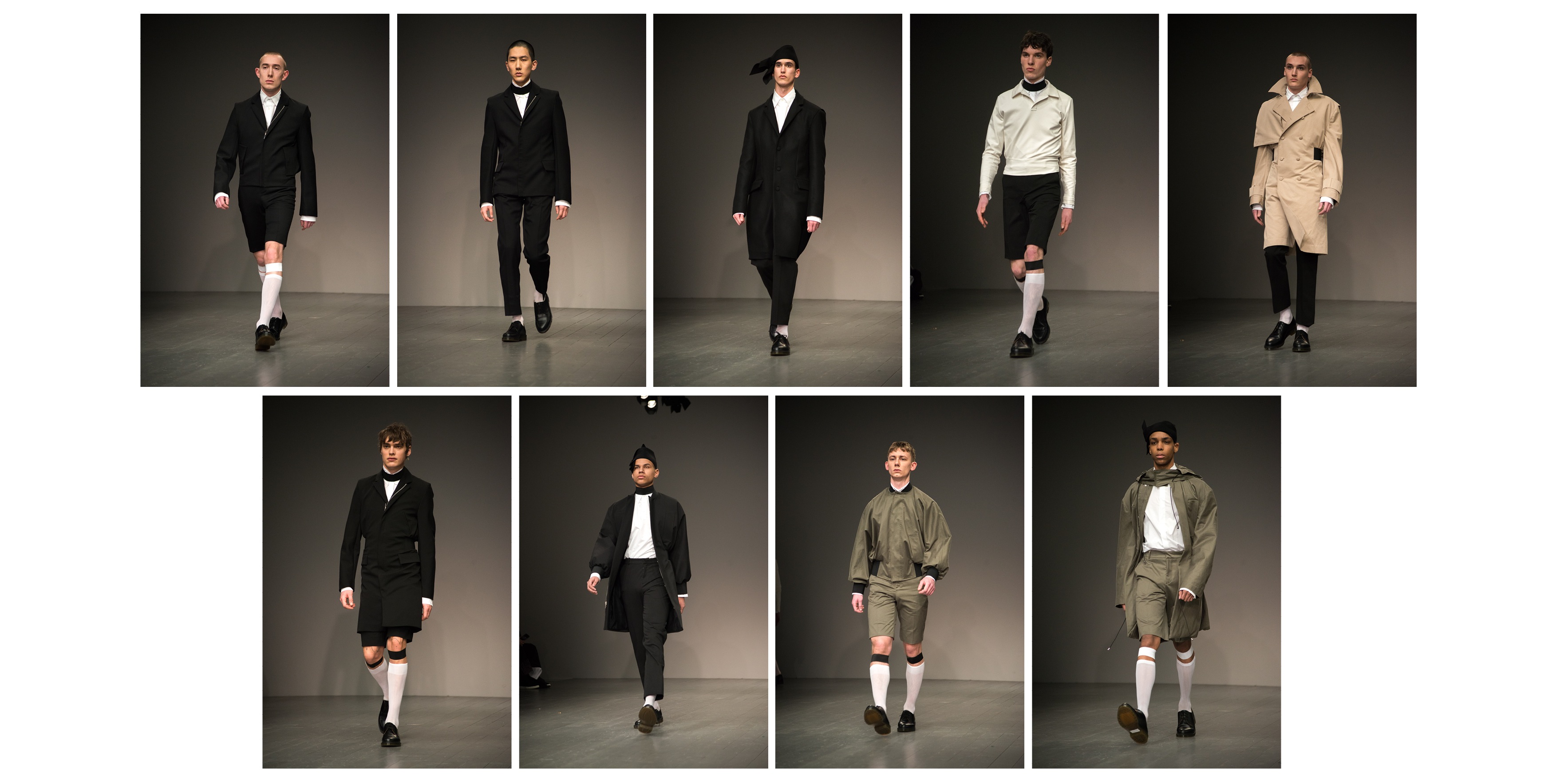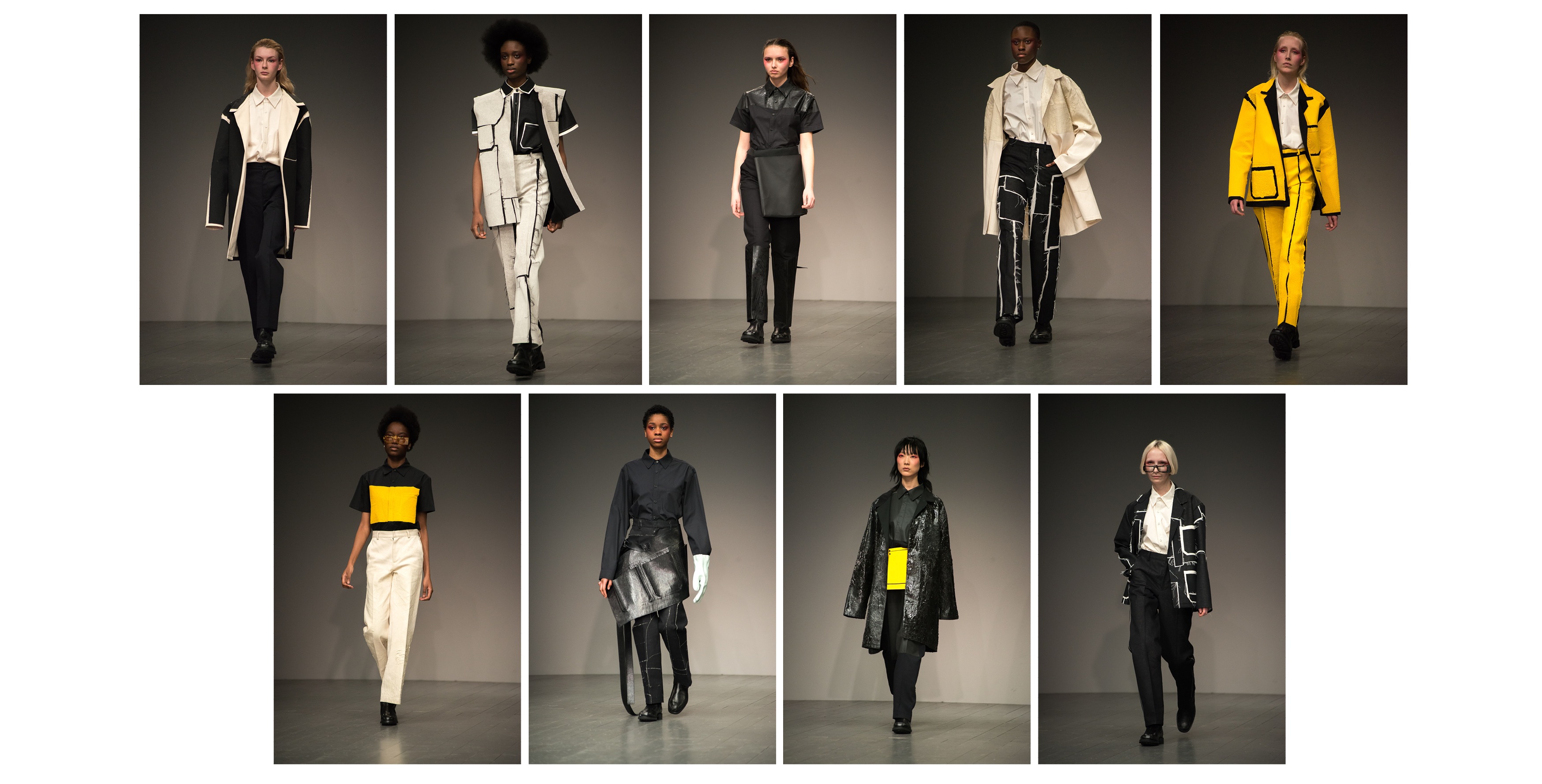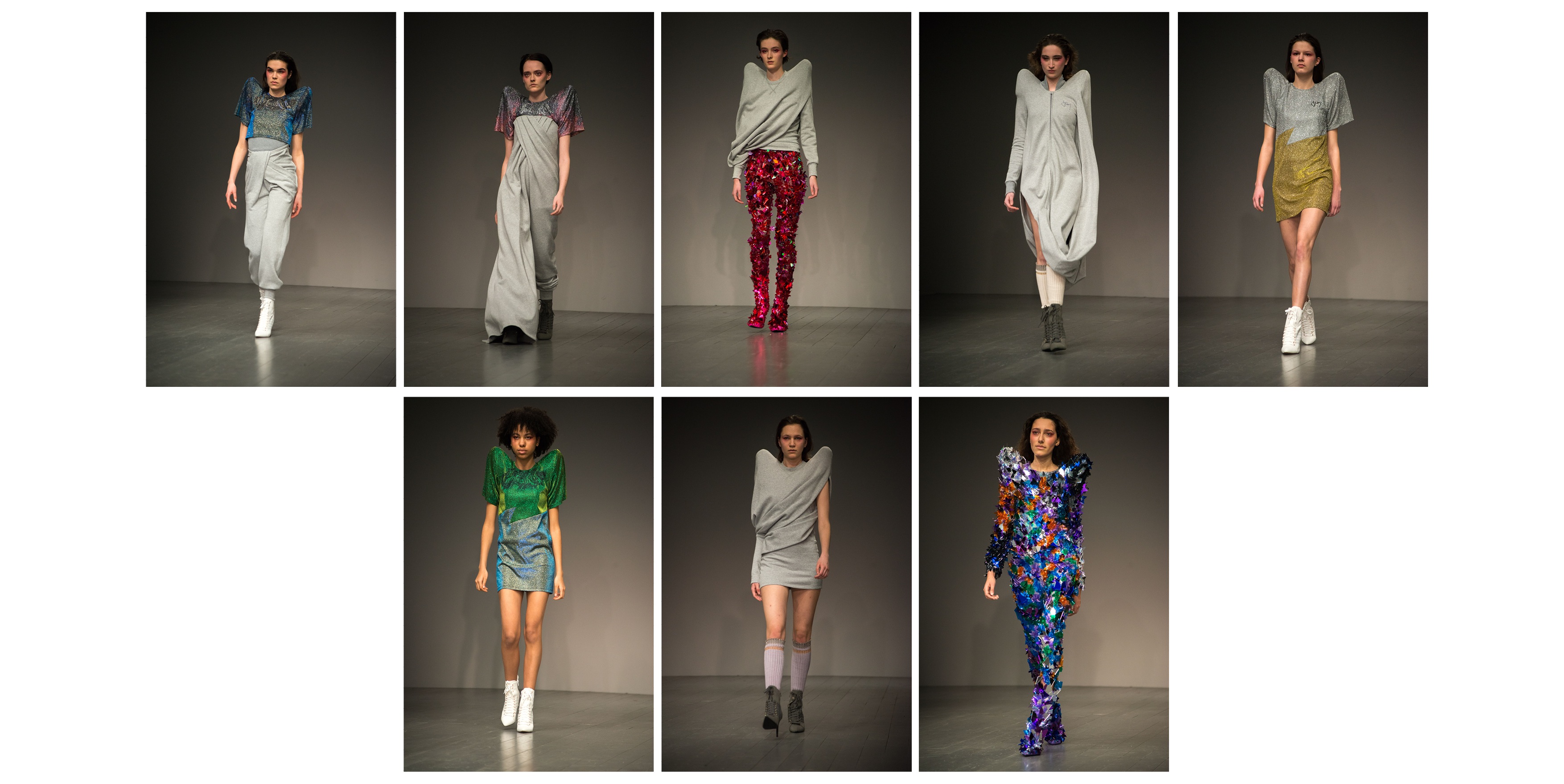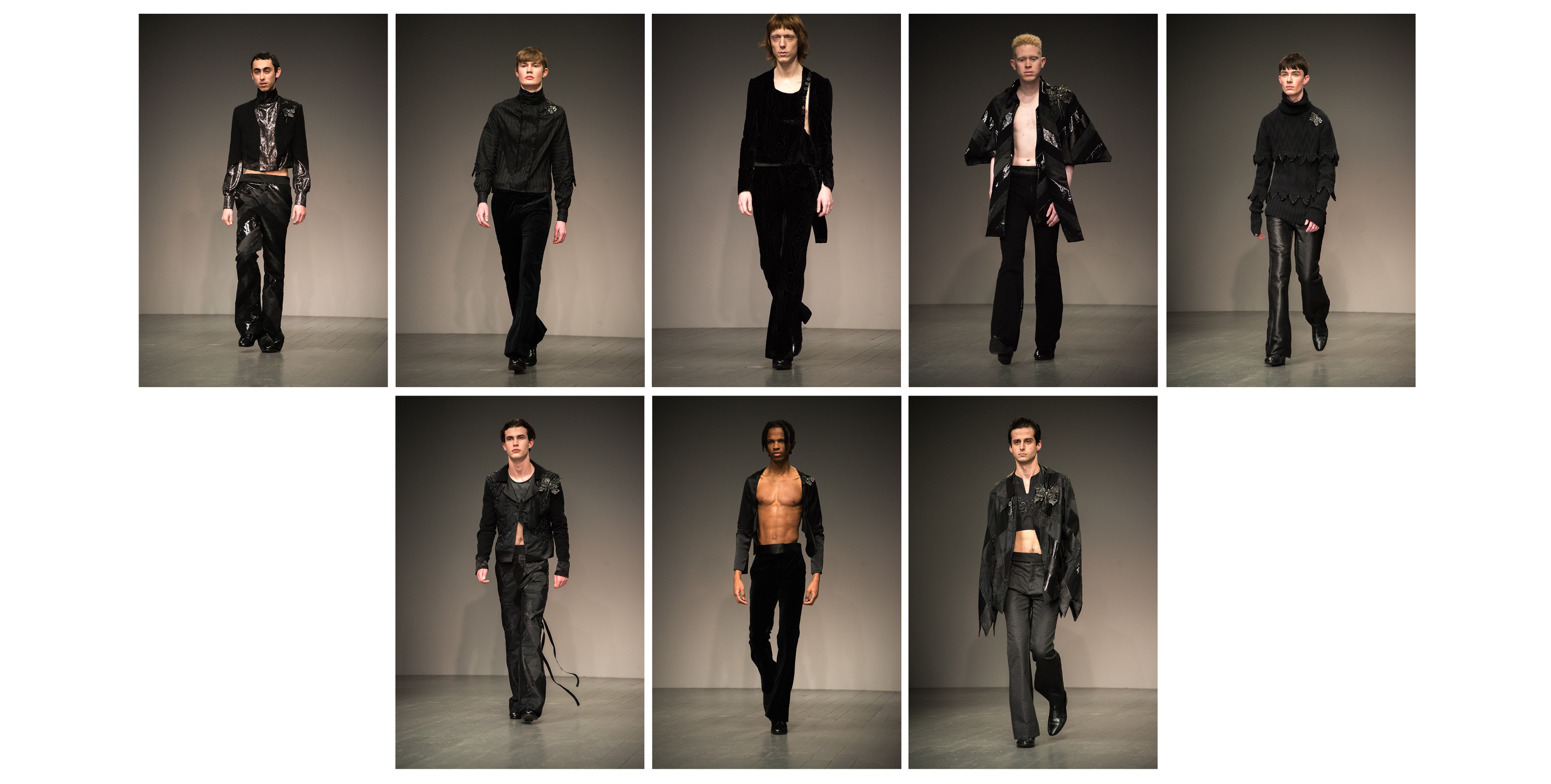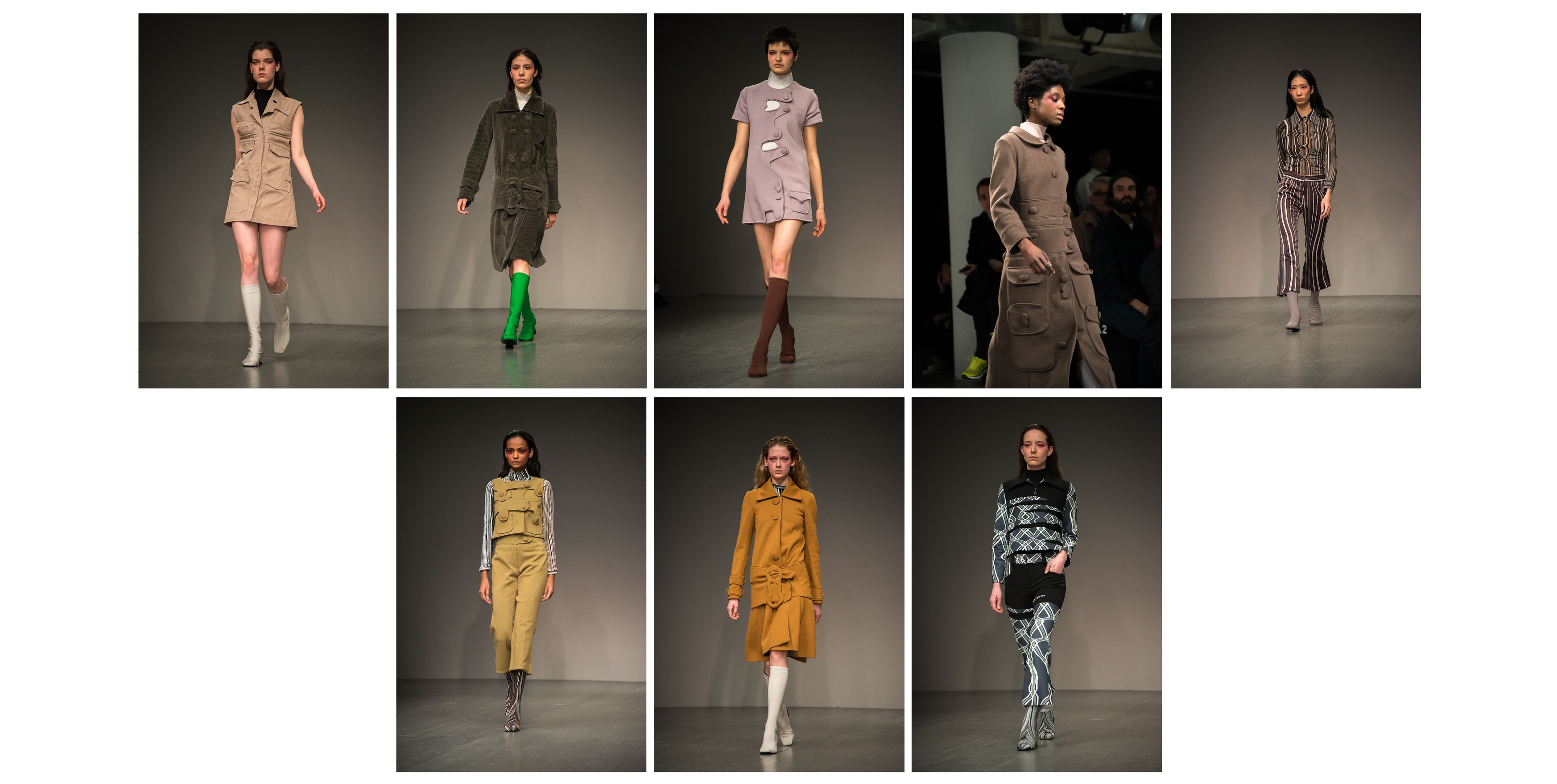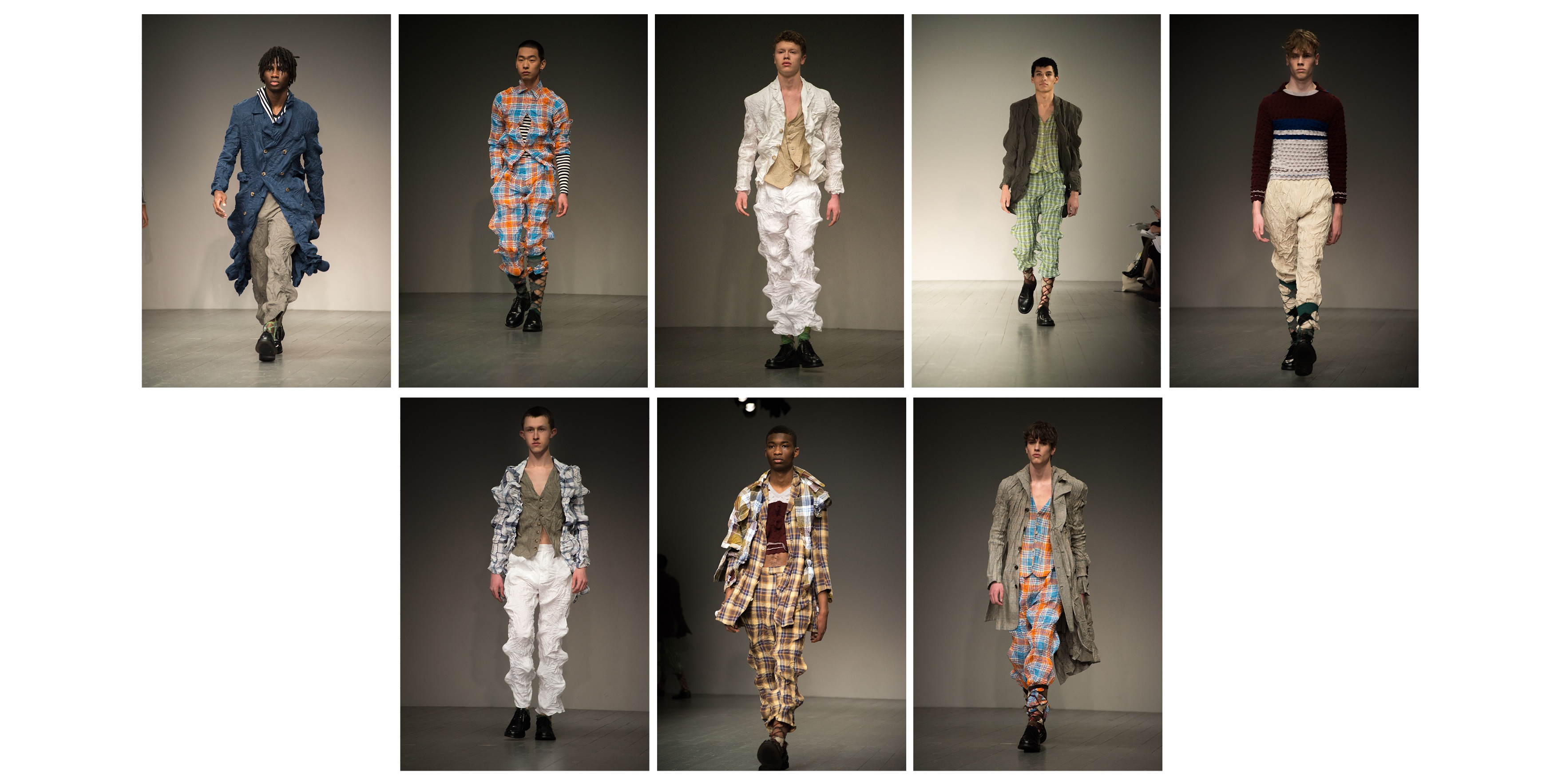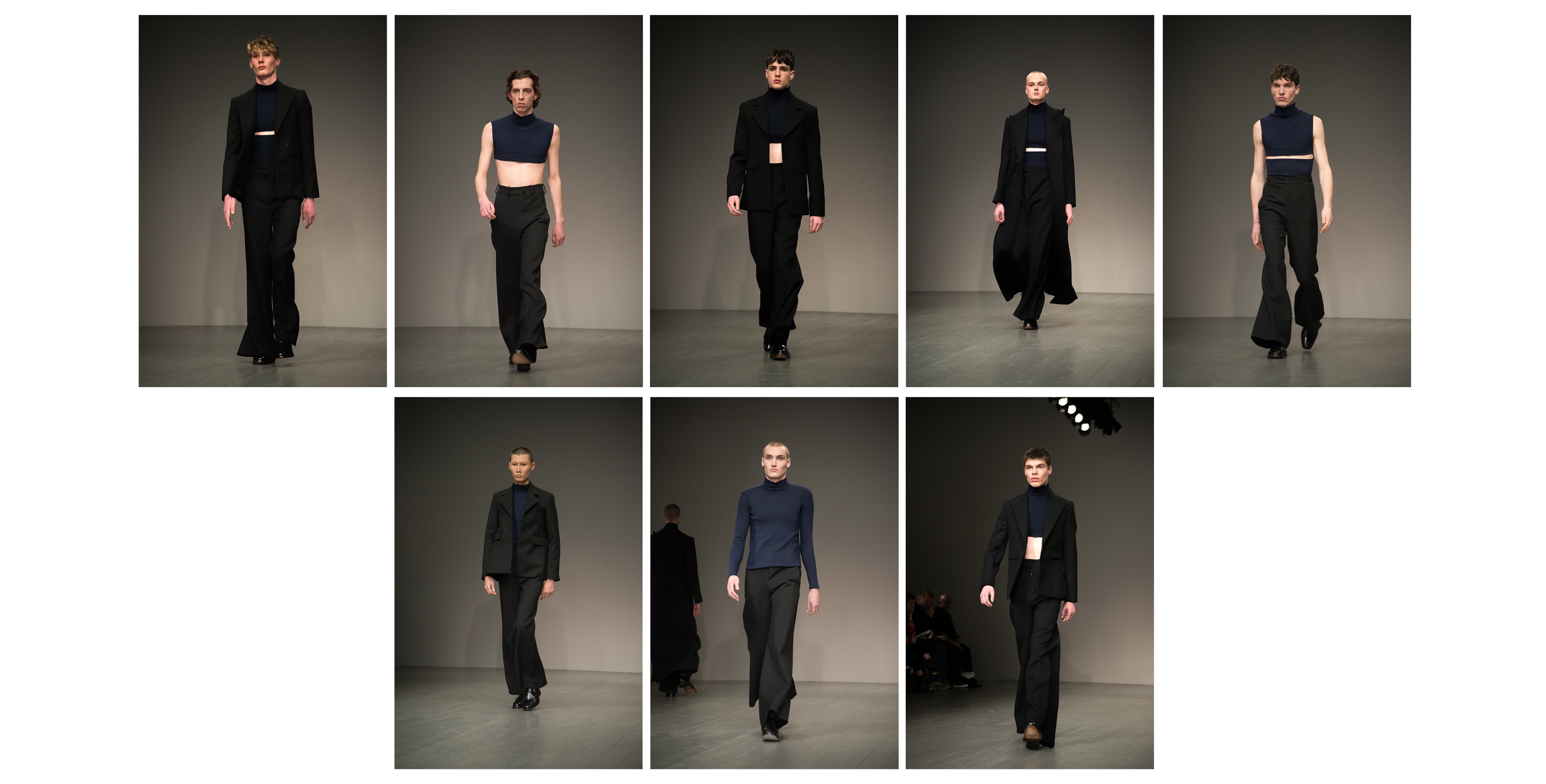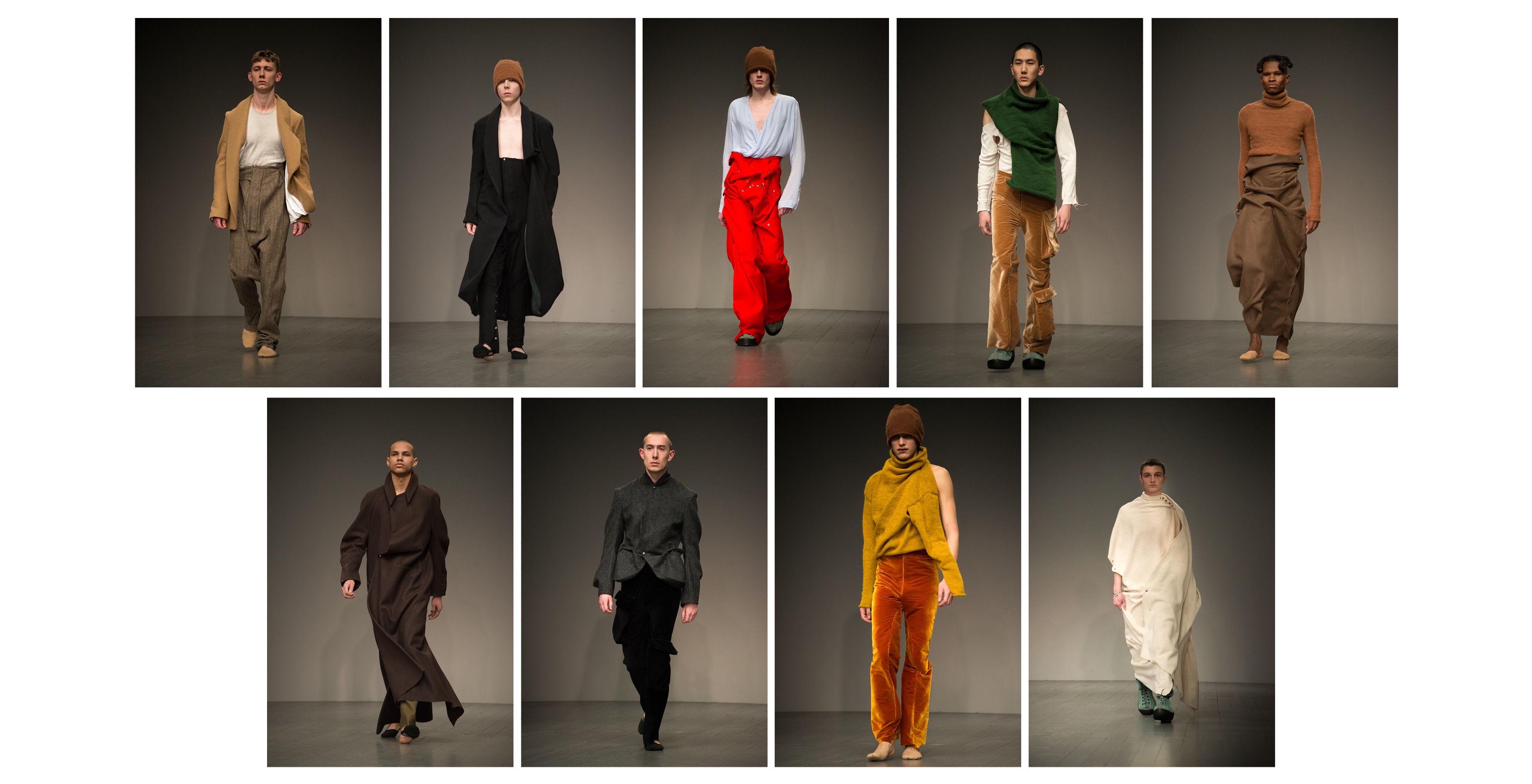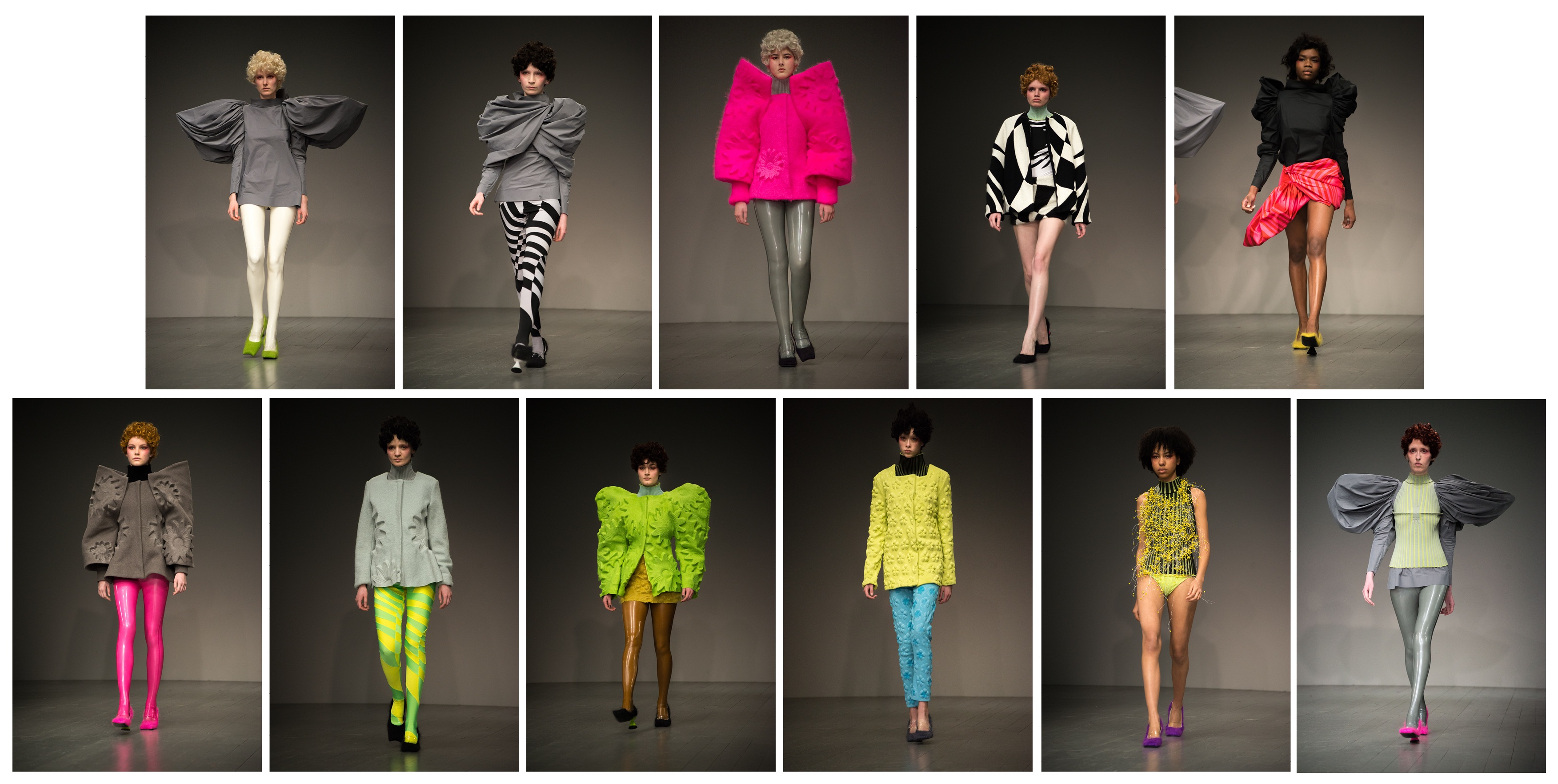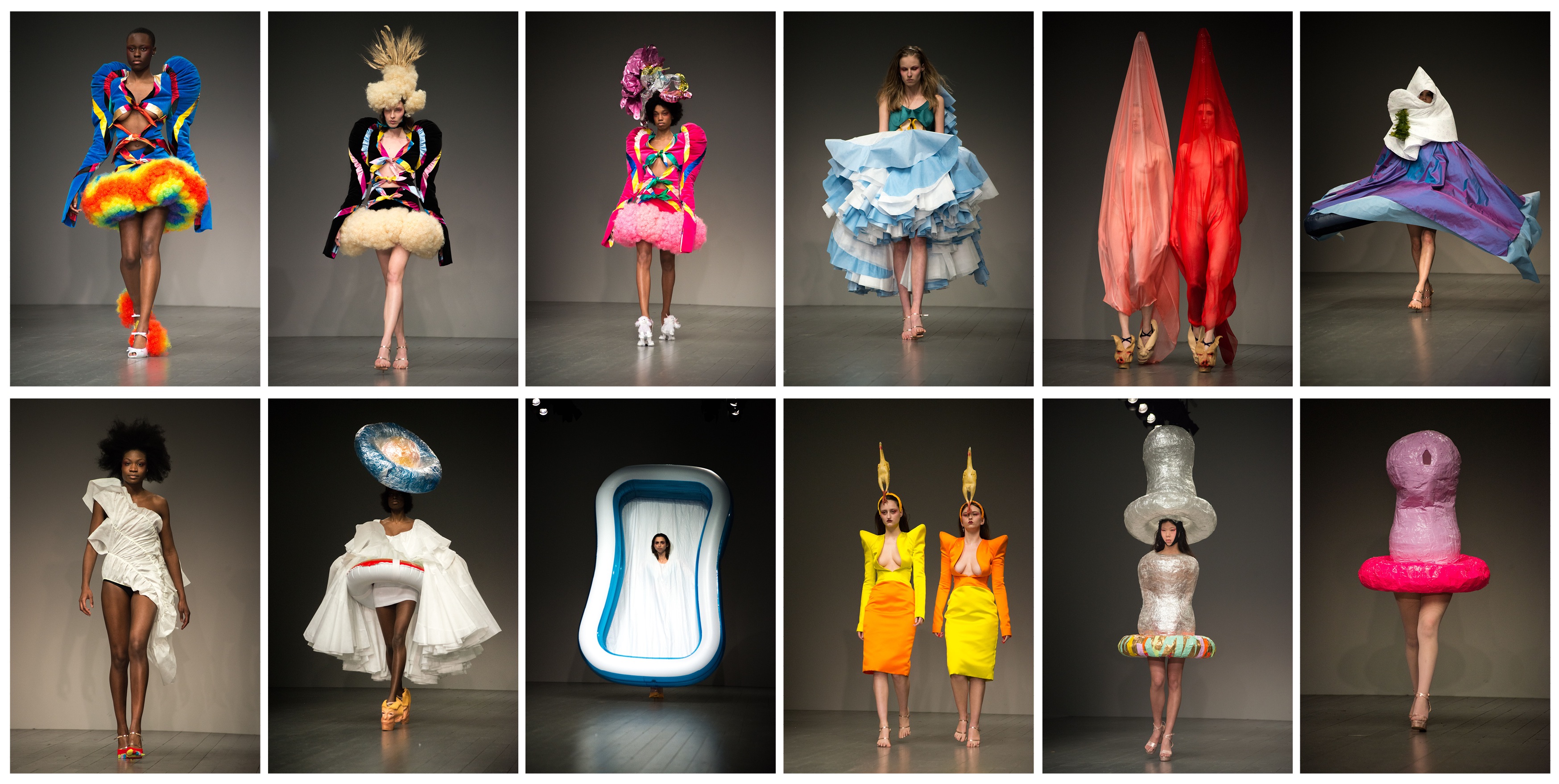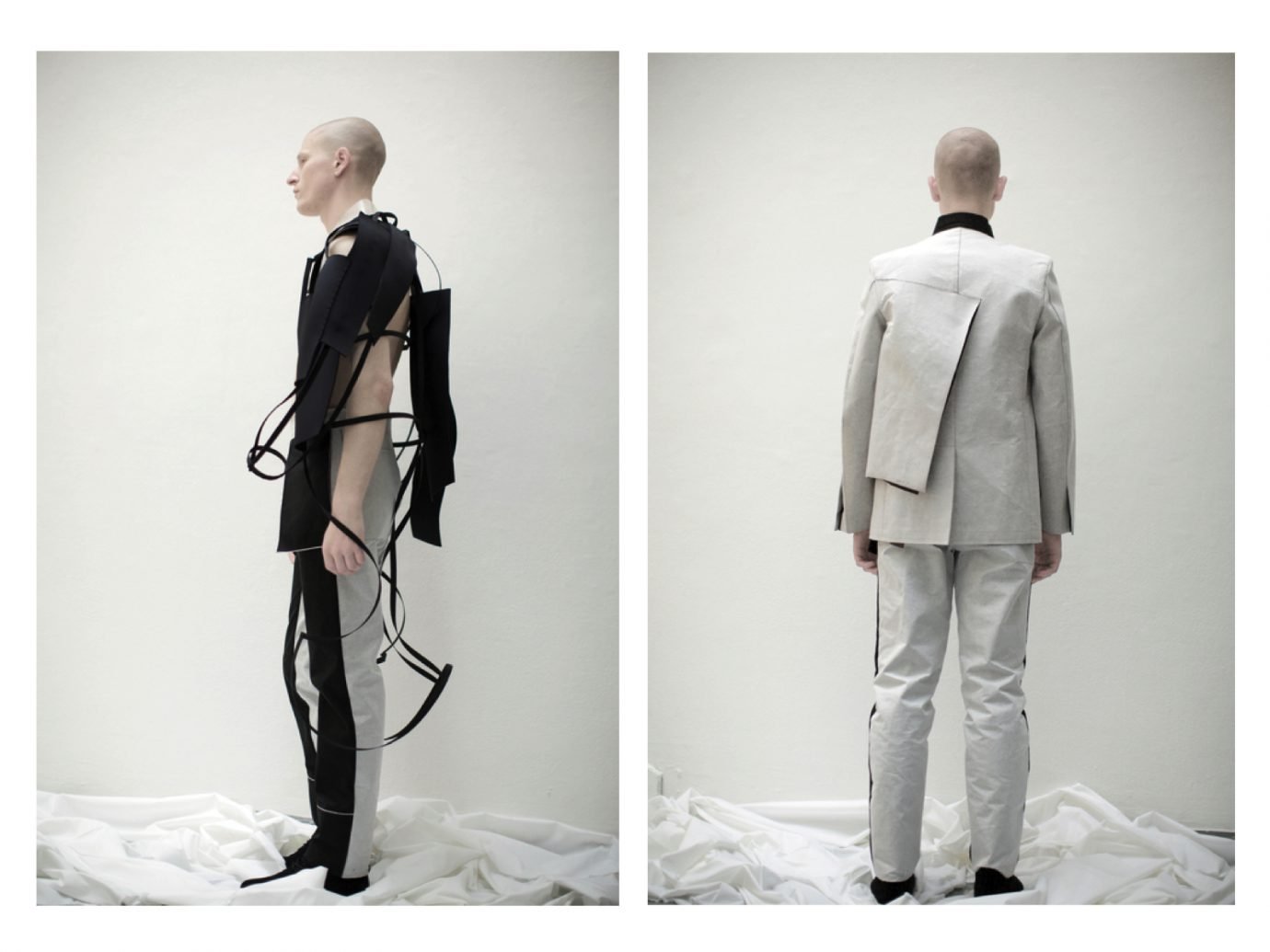Garments are a transcription of lived experience, a surface through which one can contemplate and record utopian ideals and alternate ways of being, interactions with memory and nostalgia, political ideas and conversations – worldviews in their broadest sense. Each designer’s collection was defined by their own fragile interpretations of the world around them, and, whilst once out in the world clothes eventually lose their connection to the initial ideas that inspired and fuelled their creation, the show was an apt reminder that inspiration is indeed all around us; all we have to do is look for it.
Last night’s collections were incredibly diverse, some focussing more on concept whilst others evidenced a clear affection for traditional craftsmanship and material processes. Constantly referenced was the intersection of construction and deconstruction, a recurring theme being the emphasis on sculpture and form, beginning with Liam Johnson’s bouncing silhouettes and culminating in Edwin Mohney’s exaggerated, theatrical forms. There was ethereal, printed womenswear draped and tied around the body, deconstructed reminiscences on schoolboy uniforms, oversized florals embossed and debossed on felting and coats with unorthodox quantities of belts and pockets, perfect for someone leaving the house with more than a phone and credit card but not quite enough to justify a handbag. We saw sculptural jersey pieces and deconstructed takes on menswear suiting, loosely tailored and elegant in their androgyny, the occasionally flared suit pant sure to be the envy of many a female colleague or companion. Hours had been spent on knitting machines, the final pieces reflective of immense craftsmanship; a true labour of love. Elise Perrota’s knitted collection was cathartic, a thoughtful and modern reinterpretation of classic knitwear pieces.
However, it wasn’t just the clothes that had everyone talking – the shoes alone provided plenty of inspiration. Mid-calf 60s boots with circular cut out detailing at the back, wool felted pumps resting on sculptural heels, and barely there, soleless footwear that collided somewhere between a sock and a beginner’s ballet shoe. Donald Trump’s head even touched the runway, wrapped around a model’s feet (which wouldn’t be the first time).
At a moment in which the business is already oversaturated with designers, one can’t help but wonder where we, as new designers, are all going to fit into the equation. Yet, as is the case each year, industry leaders look to this set of graduates for fresh perspectives and novel interpretations of the world, green minds ready and eager to level with an industry that is overworked and over-scheduled, desperately seeking revival and reinvention.
The exuberant spirit that characterised many of last night’s collections reminded us that fashion should be expressive and enjoyable, an outlet for relief, a form of reprieve and a perfect opportunity for escapism at a time in which the world needs it most.
click names for Instagram link

